This post may contain affiliate links. That means if you click on a link and make a purchase, I may make a small commission at no additional cost to you. Thank you for your support!
Don’t you just love a good dumpling? Comfort food at its best! Tender, doughy outsides surrounding a flavorful filling. Yumm!
Nearly every culture has its own version (or versions) of a dumpling. Some are sweet, like the Austrian and German apricot dumplings, or the Arabic Qatayef, a type of stuffed pancake, often filled with a sweet cheese or cream. While some are savory, like the Polish pierogi, or the Argentine empanada. They come steamed, boiled, fried, baked, and even frozen. And they are loved by pretty much everyone around the globe!
This particular dumpling, called mantu, comes to us from Afghanistan.
A bit of mantu + Afghan food culture history
Afghanistan, located at the heart of the ancient Silk Road trading routes, has been influenced by the food cultures of the Far East, India, Persia, and the Mediterranean. Mantu, with their wonton wrappers, spiced meat filling, and seasoned yogurt sauce, deliciously demonstrate how different food cultures can beautifully combine into heavenly dishes.
Records of mantu date back at least to the Turkic and Mongol horsemen of Central Asia, who are said to have carried frozen mantu with them during cold winter journeys and boiled them in pots over campfires for a tasty and warming meal. Today, mantu are extremely popular throughout Afghanistan. The savory little dumplings are often served for celebrations, but can also be found at many markets and street vendors.
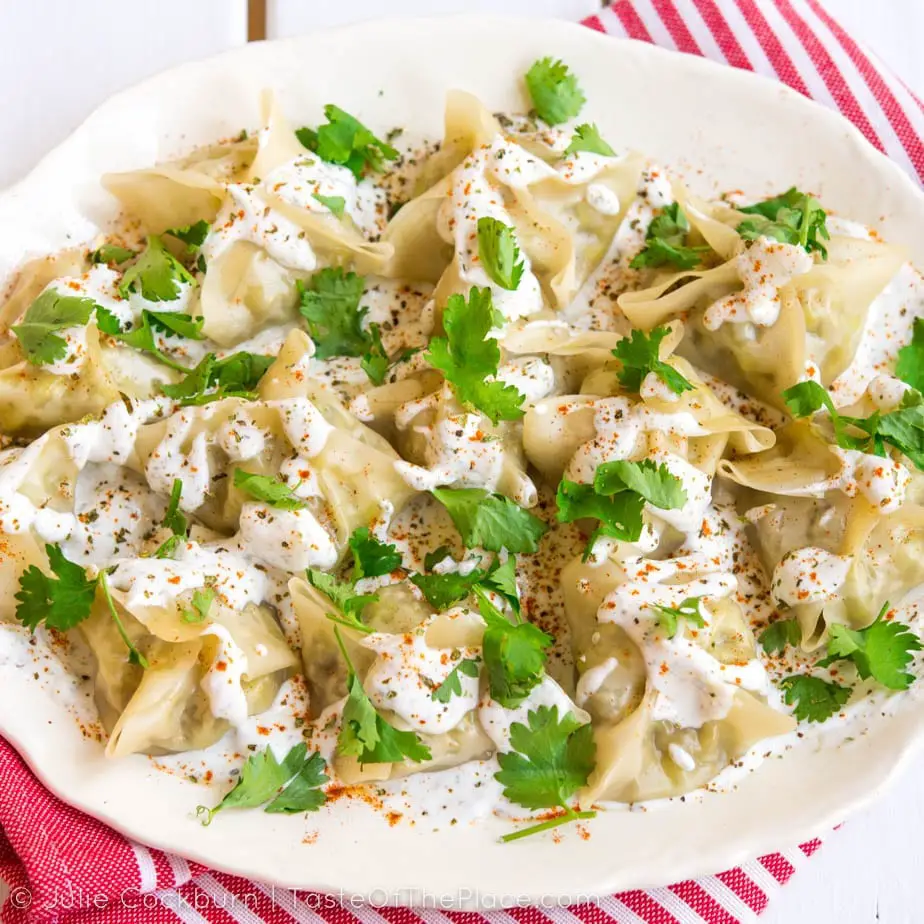
A few mantu-making tips
While my version of mantu is on the simple side, putting the dumplings together can be rather time-consuming. Stuffing and folding the wrappers is best done while sitting at the table with a good friend or two, and maybe a glass of wine or three.
Or if there are kids around your house, this may be a perfect job to delegate. Or, if you’re more like me, you’ll just stand around the kitchen stuffing and folding, while munching on a spoonful of filling from time to time, while watching your favorite food TV show. 😉
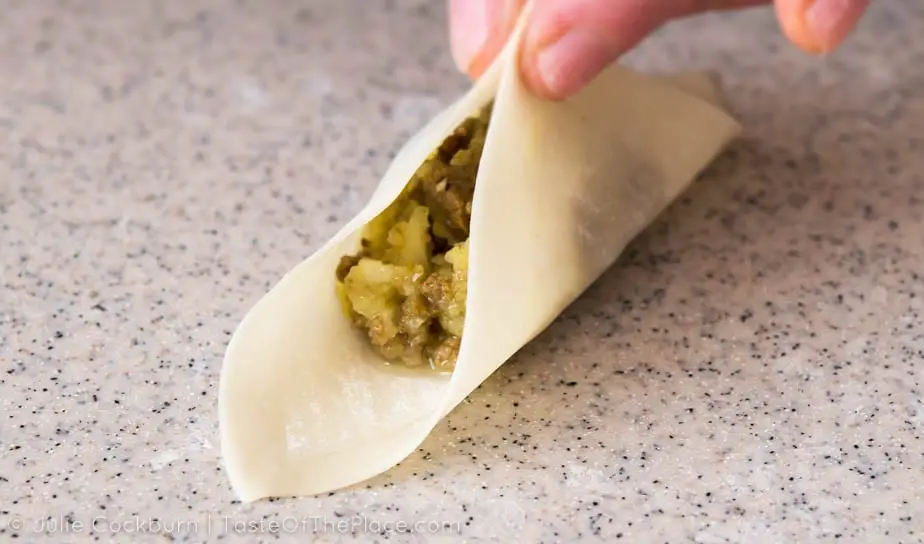
When wrapping the mantu, use your finger or a brush to slightly moisten the edges of the wrapper, then pinch two opposite corners together.
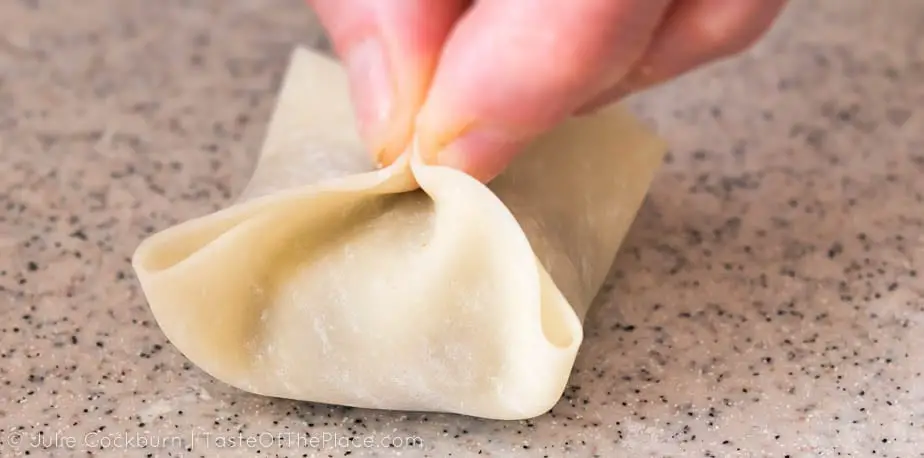
Pinch the final two corners together to form a cute little packet, then steam in a single layer. Deliciousness just waiting to happen!
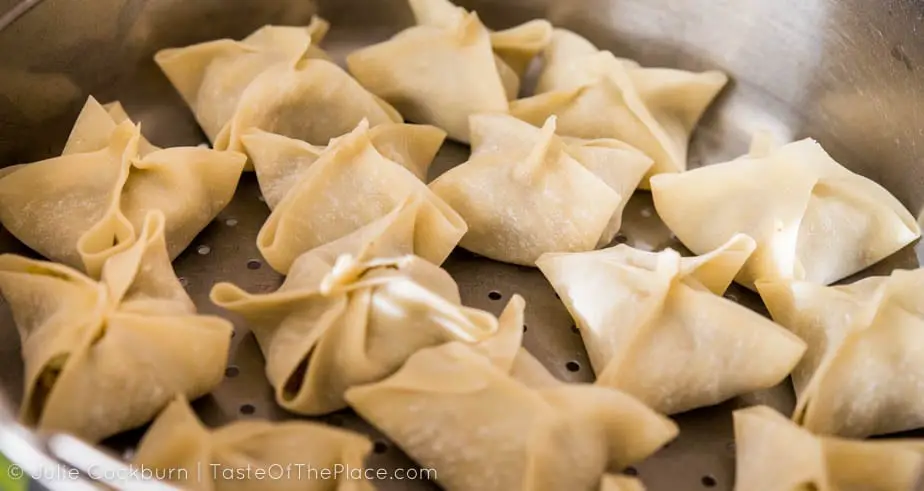
If you are making the mantu for a party, you can prepare the meat filling and the yogurt sauce a day or two ahead of time. I’ve also had success holding the steamed mantu in a warm oven – just be sure to keep them covered with a piece of lightly oiled foil so they don’t dry out.
Onions are a significant ingredient in this recipe for mantu – it has almost equal parts beef and onion. I’m sure you’ll notice the onion is added raw to the filling mixture, giving the dish a strong onion flavor. If you would like to curb the raw oniony-ness a bit, feel free to cook the onions along with the beef. I used white onions, but red or yellow would work just as well.
FAQs
Do I have to use pre-packaged wonton wrappers to make mantu?
Not at all! If you have the time and skill to make your own wrappers, go for it!
Can mantu be made ahead of time?
Both the meat filling and the yogurt sauce can be made a day or two ahead, but don’t put everything together until the day you plan to serve, or the wrappers may get soggy. Cooked mantu can be kept in a warm oven, covered with a piece of lightly oiled foil for an hour or two.

Afghan Mantu – savory beef & onion filled dumplings
- Total Time: 1 hour 10 minutes
- Yield: 40 to 50 small dumplings 1x
Description
Seasoned beef and onions, tucked away in a tender wrapper, and topped with an herby yogurt sauce make this delicious recipe for Afghan mantu, or dumplings, a perfect crowd pleaser for your next party!
Ingredients
Yogurt sauce
- 1 cup unsweetened yogurt
- 1 teaspoon dried mint
- 1 clove garlic, minced
- Salt
Mantu
- 1 tablespoon olive oil, plus additional for brushing
- 1 pound ground beef
- 1 teaspoon salt
- 1/2 teaspoon ground turmeric
- 1 teaspoon ground coriander
- 2 cloves garlic, minced
- Big pinch of freshly ground black pepper
- 2 medium onions, minced
- 1 bunch (about 2 1/2 ounces) fresh cilantro, minced
- 40 to 50 wonton wrappers – these come in packs of 48 in my part of the world
Finishes
- Cayenne pepper, for garnish
- Cilantro leaves, for garnish
Instructions
Yogurt sauce
- In a small mixing bowl, whisk together the yogurt, dried mint, garlic, and salt to taste.
- Depending on the thickness of your yogurt, whisk in enough water, 1 tablespoon at a time, to achieve a creamy, yet drizzle-able consistency. I typically use Greek yogurt, and find that 1 cup of yogurt needs about 5 tablespoons of water.
- Set aside, covered in the refrigerator, until ready to use.
Making the filling
- Heat the oil in a large skillet or Dutch oven over medium high heat, until the oil begins to shimmer and move around the skillet. Add the beef, 1 teaspoon salt, ground turmeric, ground coriander, garlic, and pepper to the skillet, and cook, stirring frequently and breaking up any big chunks of ground beef, until the beef is cooked through and most of the moisture has evaporated.
- Remove from the heat, and stir in the minced onion and cilantro. Allow the mixture to cool slightly before moving on to the next step.
Stuffing the wrappers
- Place a small spoonful of the stuffing into the center of a wonton wrapper.
- With your fingertip or a pastry brush, brush a small amount of water on the outside edges of the wrapper to make it slightly sticky. Shape the wrapper into a dumpling by first gently pinching two opposite corners together, then gently pinching the remaining two corners together.
- Repeat with the remaining wrappers, covering them loosely with a towel or plastic wrap until ready to steam.
- Don’t worry if you end up with more filling than wrappers. Reserve the extra filling and scatter it over the finished dish as a garnish.
Steaming the mantu
- Heat your oven to its lowest possible temperature, around 175°F. You will likely need to cook the mantu in batches, and you’ll want to keep them warm in the oven until ready to serve.
- Meanwhile, heat an inch or two of water in a pot fitted with a steamer insert. Be sure the water doesn’t touch the bottom of the insert. Adjust the temperature so the water stays at a steady, steamy simmer – gently bubbling and steaming, without boiling furiously.
- Brush the surface of the steamer insert with a small amount of oil, and gently place the mantu in a single layer, working in batches if necessary. Cover and steam until the wrappers are tender and slightly translucent, about 8 minutes. Repeat with the remaining mantu.
- Gently wrap the steamed mantu in a piece of foil that has been lightly brushed with oil, and place in the warm oven until ready to serve.
Serving
- Spread half the yogurt mixture over the surface of a large serving platter. Gently pile the steamed mantu on the platter, and decoratively drizzle about 1/4 of the yogurt mixture on top. Place the remaining yogurt in a dish for dipping at the table. Garnish the platter of mantu with a dusting of cayenne pepper and cilantro leaves.
Notes
If you would like to curb the raw onionyness of this recipe a bit, feel free to cook the onions along with the beef. I used white onions, but red or yellow would work just as well.
If you are making the mantu for a party, you can prepare the meat filling and the yogurt sauce a day or two ahead of time. I’ve also had success holding the steamed mantu in a warm oven – just be sure to keep them covered with a piece of lightly oiled foil so they don’t dry out.
Interested in trying more tasty dishes from Afghanistan? Afghan Bolani is a fun street food style recipe made by stuffing thin crust with savory ingredients. While Afghan Noodle Soup, or Aush is a comforting combo of noodles, beef, spices, and a creamy broth, perfect for a cold winter day.
- Prep Time: 1 hour
- Cook Time: 10 minutes
- Category: Entree or appetizer
- Cuisine: Afghan
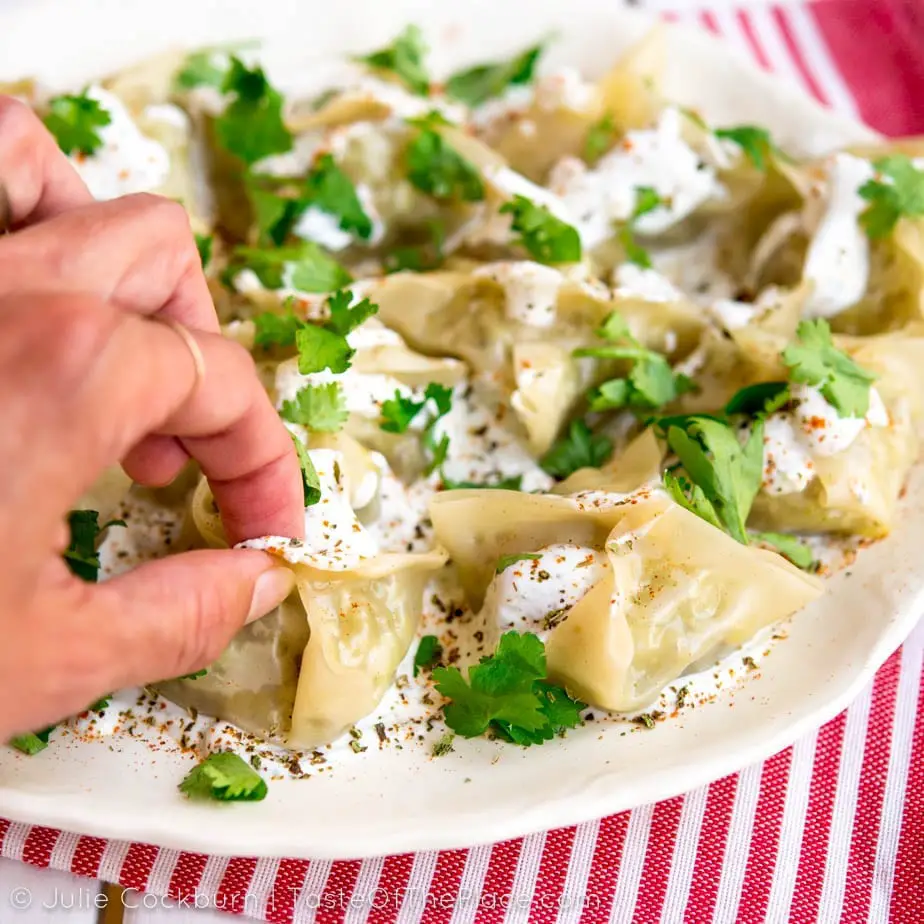
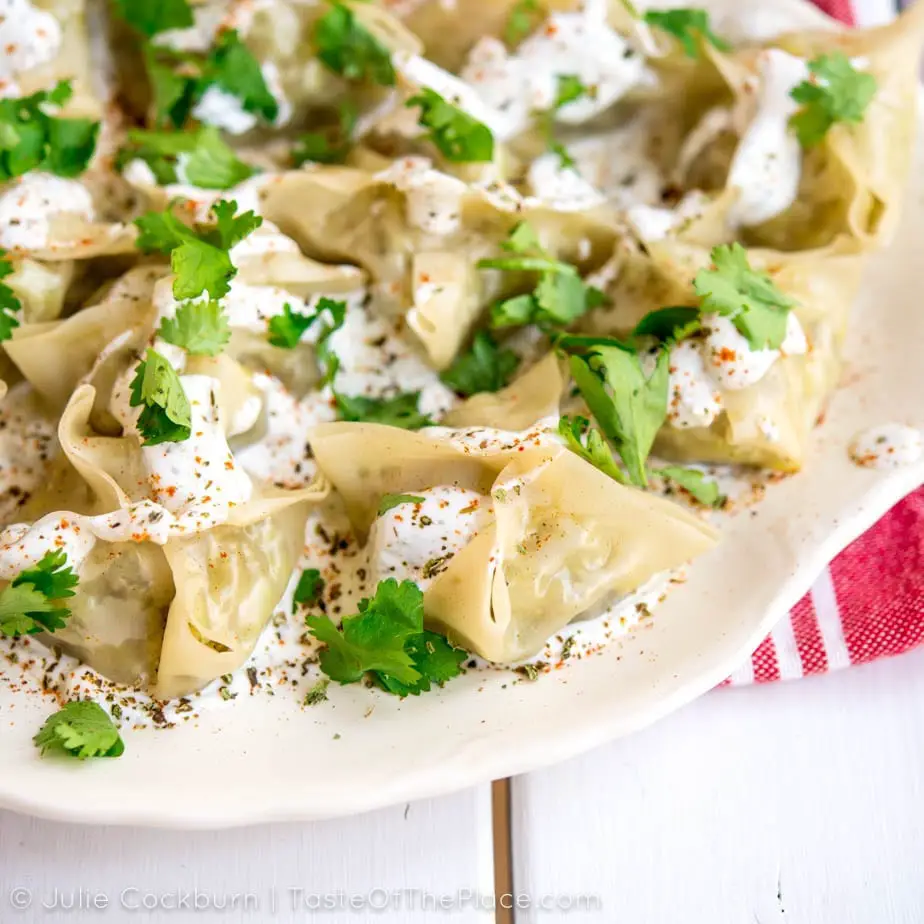




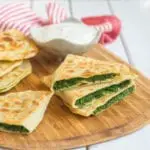









Leave a Reply